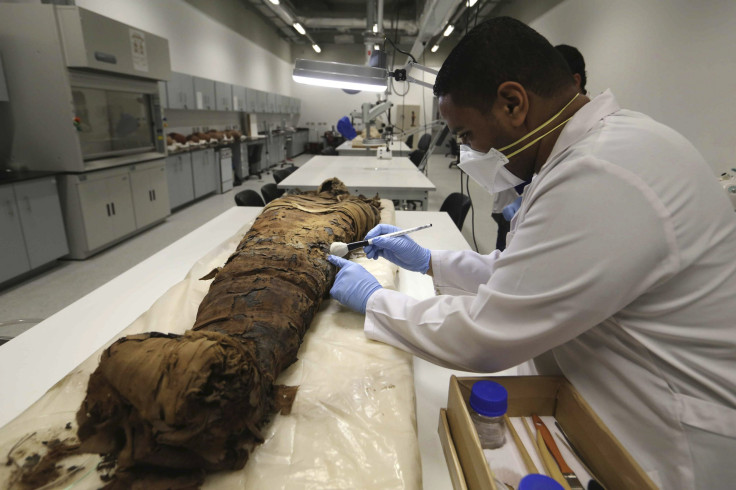Human Corpse Gets Ancient Egyptian Embalming Treatment To Show How Mummies Were Made

A modern corpse is getting the ancient Egyptian treatment as scientists have attempted to embalm two human legs using techniques mastered thousands of years ago. The study sheds new light on the ancient art of mummification, a practice commonly depicted in movies and books but one with results that have never been truly re-created, according to research published this week in the journal the Anatomical Record.
It was the first time scientists have employed current technology to centuries-old embalming practices. “The goal of this study is to apply evidence-based diagnostic criteria and state-of-the art methodology in order to improve knowledge on soft tissues preservation and postmortem alterations,” researchers led by Christina Papageorgopoulou, an anthropologist at Democritus University of Thrace in Greece, wrote.
Researchers used two female human legs that had been donated to science. One leg was mummified naturally by dry heat; the other was preserved with an ancient Egyptian embalming technique involving soaking the remains in natron – a mineral made up of hydrated sodium carbonate – to prevent putrefaction, or decay. Scientists studied the legs using X-rays and DNA samples to monitor the mummification process.
While the leg left to naturally mummify failed, the leg that had been treated with the natron solution proved successful, according to LiveScience. There was one caveat: The process of mummifying the leg took nearly seven months – five months longer than it took the ancient Egyptians to accomplish the same task.
"We were not so quick like the ancient Egyptians," Papageorgopoulou told LiveScience. Researchers pinpointed Egypt’s arid environment, which would have accelerated the mummification process, as the reason Egyptians would have mummified their dead quicker. The point of the experiment was “more or less state-of-the-art documentation on how the ancient Egyptians mummified their bodies," said Papageorgopoulou. Their conclusion was that natron was indeed an effective method of preserving human remains for long periods of time.
There’s still a lot of speculation about what went into making an Egyptian mummy. Generally, scholars believe mummification involved removing the brain and internal organs and using natron to wash out the body fluids. The heart was typically left inside the body to be carried into the afterlife.
After 40 days of repeatedly washing the corpse with natron, embalmers would massage oils into the body. The body was then wrapped in linens.
“The Egyptians mummified their dead because they believed that their souls needed the physical bodies to have a resurrection,” Salima Ikram, a professor at the American University in Cairo, said in an interview with PBS in 2006. “And that's why mummification took place, because without the body, they felt that the soul would not be able to continue on for eternity.” The best embalmers, of course, were reserved for the pharaohs.
Most of what is known about ancient mummification techniques has come from mummies themselves, Egyptian engravings found on tombs and temples, and from the Greek historian Herodotus.
© Copyright IBTimes 2024. All rights reserved.






















